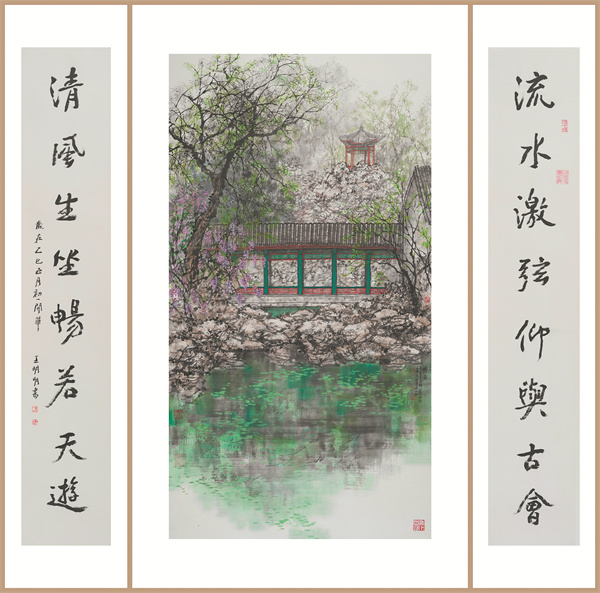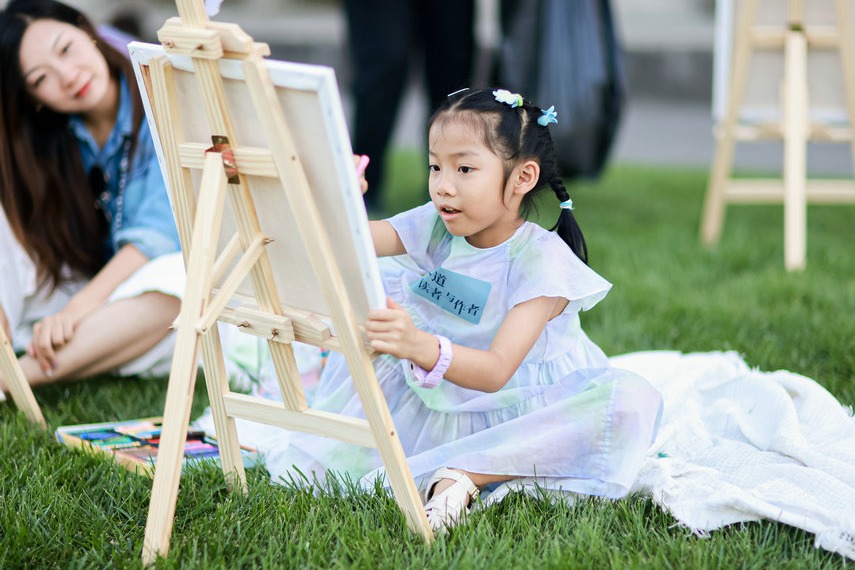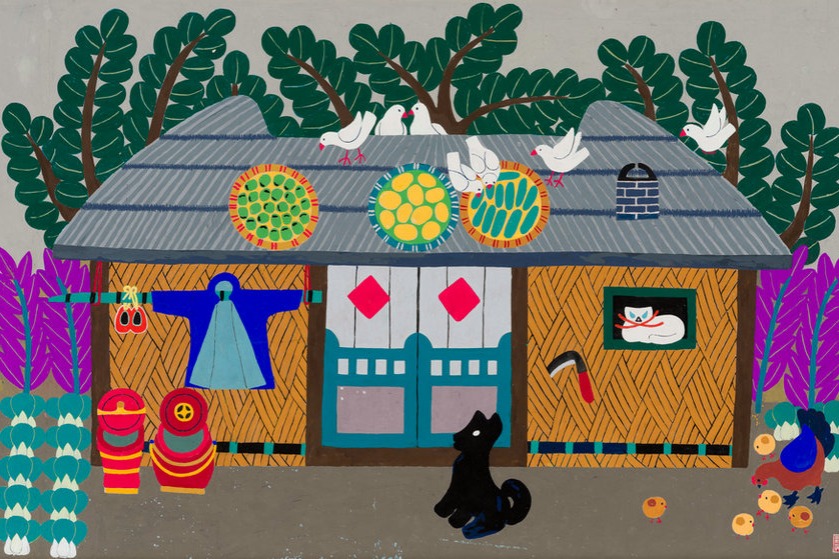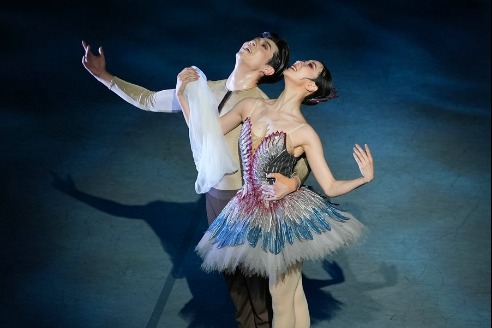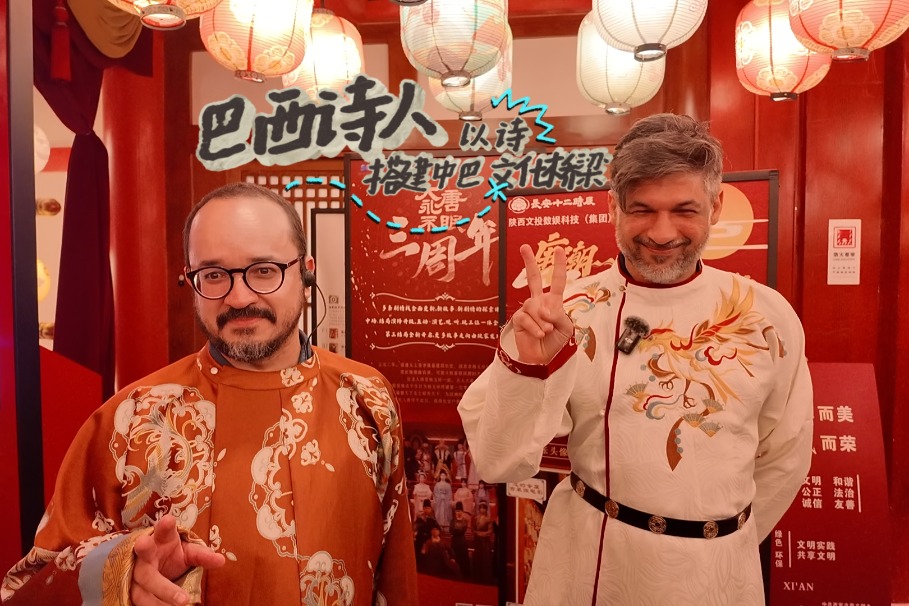Inking inspiration from classical gardens


"It has meanings so profound, one needs to spend a long time to comprehend them," Wang says.
There is a pursuit of "emptiness" in both the classic garden design and Chinese painting tradition through which one is to understand the richness and rules of the world. Thereafter, as Wang says, one "would ascend to a spiritual domain in which he can express himself through artistic creativity".
To express such meditative silence in garden scenes, Wang says he uses more light, grayish colors over heavy hues. He also shuns dipping with dry, thick ink brushes. For example, when drawing mountains, he smudges the outlines to soften the hard profile of the rocks, creating a feeling of dense moisture. He believes this treatment will generate the effect of qiyun shengdong, or animation with spiritual resonance, which was first proposed by painter and art theorist Xie He of the Southern Dynasty (420-589).
Morning Glows on Duixiu Shan, a painting on display, exemplifies an attempt at that state of artistry Xie mentioned. It shows the dawn over the Duixiushan (Mountain of Accumulated Elegance), an elevated, hollowed mountain; on top sits a pavilion, together forming a famous rockery site at the Palace Museum in Beijing. The cloud, complete with a smudge of faint pink, and the rocks' rosy touches, replicate the morning peace at the Palace Museum, meanwhile maintaining the majestic atmosphere of the former imperial palace.
Wang Ning, president of the National Centre for the Performing Arts, says elegance and vitality have erupted under the strokes of Wang Mingming, which unfold season-changing scenes before his audiences.
"He is inspired by and has reimagined nature to create a garden of his own, for the heart and soul, illustrating Eastern aesthetics in the depictions of the real and the unreal."
Wu Hongliang, current director of the Beijing Fine Art Academy, says the exhibition, which his predecessor had been dedicated to organizing for a long time, presents the atmosphere of a yaji, traditionally a gathering of elegance attended by intellectuals in ancient times. "It reiterates the essential beauty of Chinese painting, not tending for a strong visual impact, which, in silence, evokes artistic conceptions and philosophical reflections."
